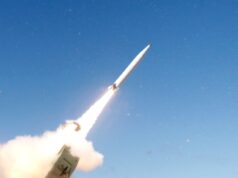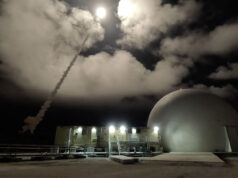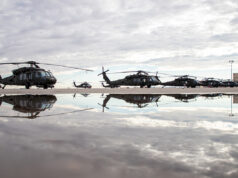Lockheed Martin has announced that the Sikorsky HH-60W Combat Rescue Helicopter achieved a Milestone C decision from the U.S. Air Force, which moves the program into low rate initial production.
The firm say that the Combat Rescue Helicopter will perform critical combat search and rescue and personnel recovery operations for all U.S. military services.
View the latest CRH video here.
The four instrumented test aircraft at the Sikorsky Development Flight Center in West Palm Beach, Florida, demonstrated their production readiness during rigorous U.S. Air Force (USAF) performance and flight load survey testing.
“The joint Sikorsky and USAF flight test team has executed over 150 hours of envelope expansion flights, which provided USAF the data necessary to execute a Milestone C decision. This decision allows Sikorsky to begin production of the aircraft, which is based on the venerable BLACK HAWK helicopter.”
“This affirmative Milestone C decision validates the modifications to Sikorsky’s most successful BLACK HAWK helicopter, making it capable of saving downed airmen anytime, anywhere around the world,” said Greg Hames, Sikorsky program director. “This establishes the Combat Rescue Helicopter as a production program.”
There are five CRH aircraft in various stages of production at Sikorsky’s Stratford facility. Sikorsky employees and our nationwide supply chain are ready to begin production and support delivering this all new aircraft to the warfighter.
The USAF calls for 113 helicopters to replace its predecessor, the Sikorsky HH-60G PAVE HAWKs.
“We have just successfully gained approval to launch the production of a helicopter that will save the lives of our warfighters and our allies all over the world. This decision begins the transition to this more capable and reliable helicopter to fulfill the Air Force’s mission to leave no one behind. I could not be more proud of our government-contractor team for making this happen,” said Col. Dale R. White, Program Executive Officer, Intelligence, Surveillance, Reconnaissance and Special Operations Forces, USAF.
The firm say that the CRH is significantly more capable and reliable than the HH-60G PAVE HAWK.
The aircraft hosts a new fuel system that nearly doubles the capacity of the internal tank on a UH-60M BLACK HAWK, giving the USAF crew extended range and more capability to rescue those injured in the battle space.
The CRH specification drives more capable defensive systems and enhances the vulnerability reductions, hover performance, electrical capacity, avionics, cooling, weapons, cyber-security, environmental, and net-centric capabilities beyond the current HH-60G.










Looks great. Anyone know what will replace our pumas and 50 year old gazelles yet? The gazelles play a crucial role at the British Army training Canada site and they are getting on now but no doubt they’ll last another few years like puma but would be nice to know what’s the future.
I read somewhere that MoD are looking to next generation technologies to replace Merlin and Puma with s single design. Given that the Pumas were practically re-manufactured recently, and Merlin remains in production, it will be another decade before a new medium weight design is ordered I imagine. As for the few remaining gazelles, who knows? Historically we have bought or leased commercial helicopters – e.g. for FOST, SF and VIP communications uses.
Our special forces got 8 wildcat helicopters not long ago, not sure if they were taken from army numbers.
As far as I know the decision to replace the Lynx AH.9As with Wildcat was reversed and 657 sqn. AAC (the SF squadron) disbanded last year. I think SF wanted something larger – Blackhawk sized – anyway to complement the RAF’s Chinooks. 2-4 Wildcats are retained at a high level of readiness for SF support (and a cadre of AAC Wildcat pilots continue to train with SF) and RAF Puma’s are supposed to be taking over 657’s role once they have trained enough pilots in SF ops.
The RN/RAF could do with a dozen of these for JPR, however the rumblings I’ve heard is that a bit of MH47F is on the cards.